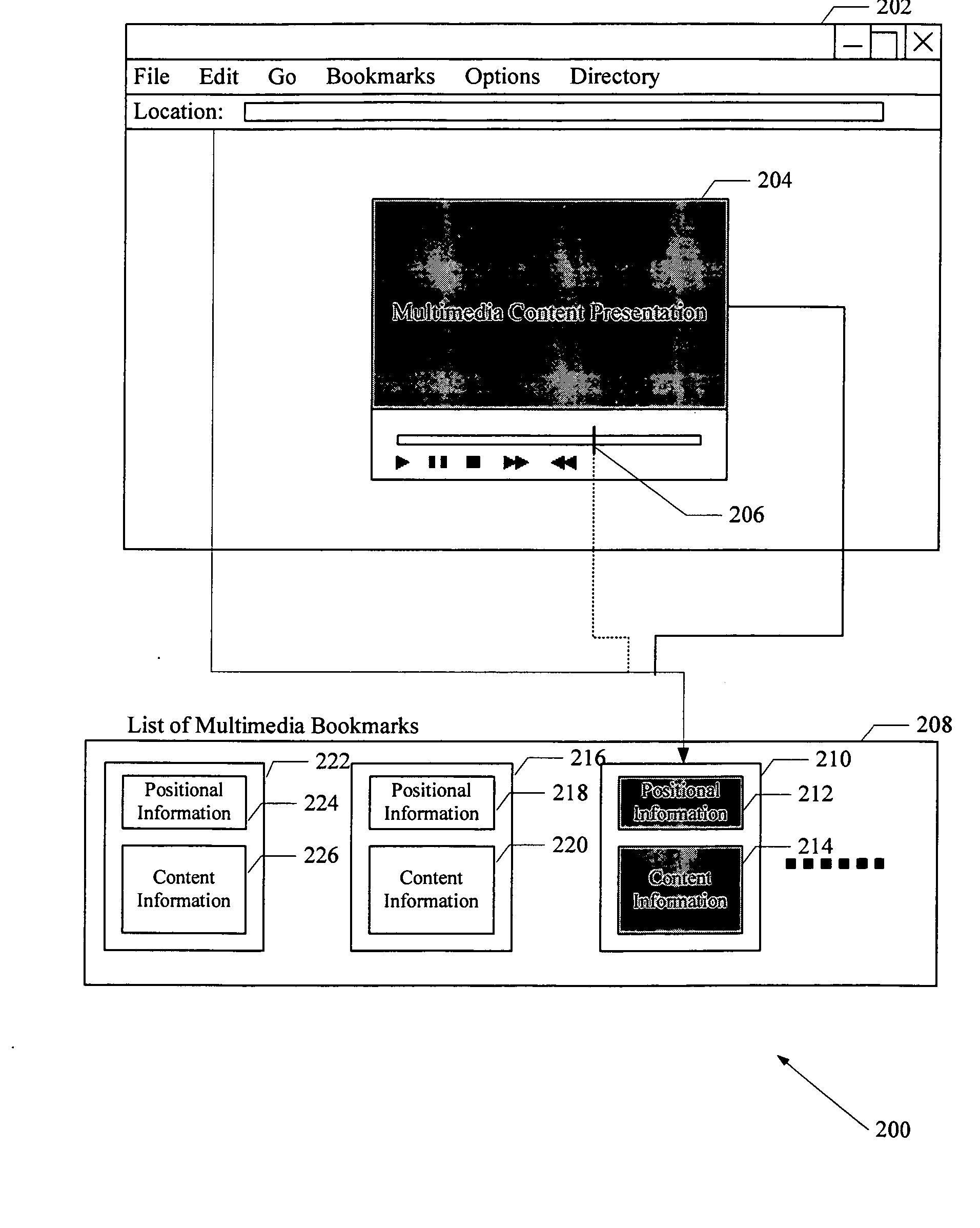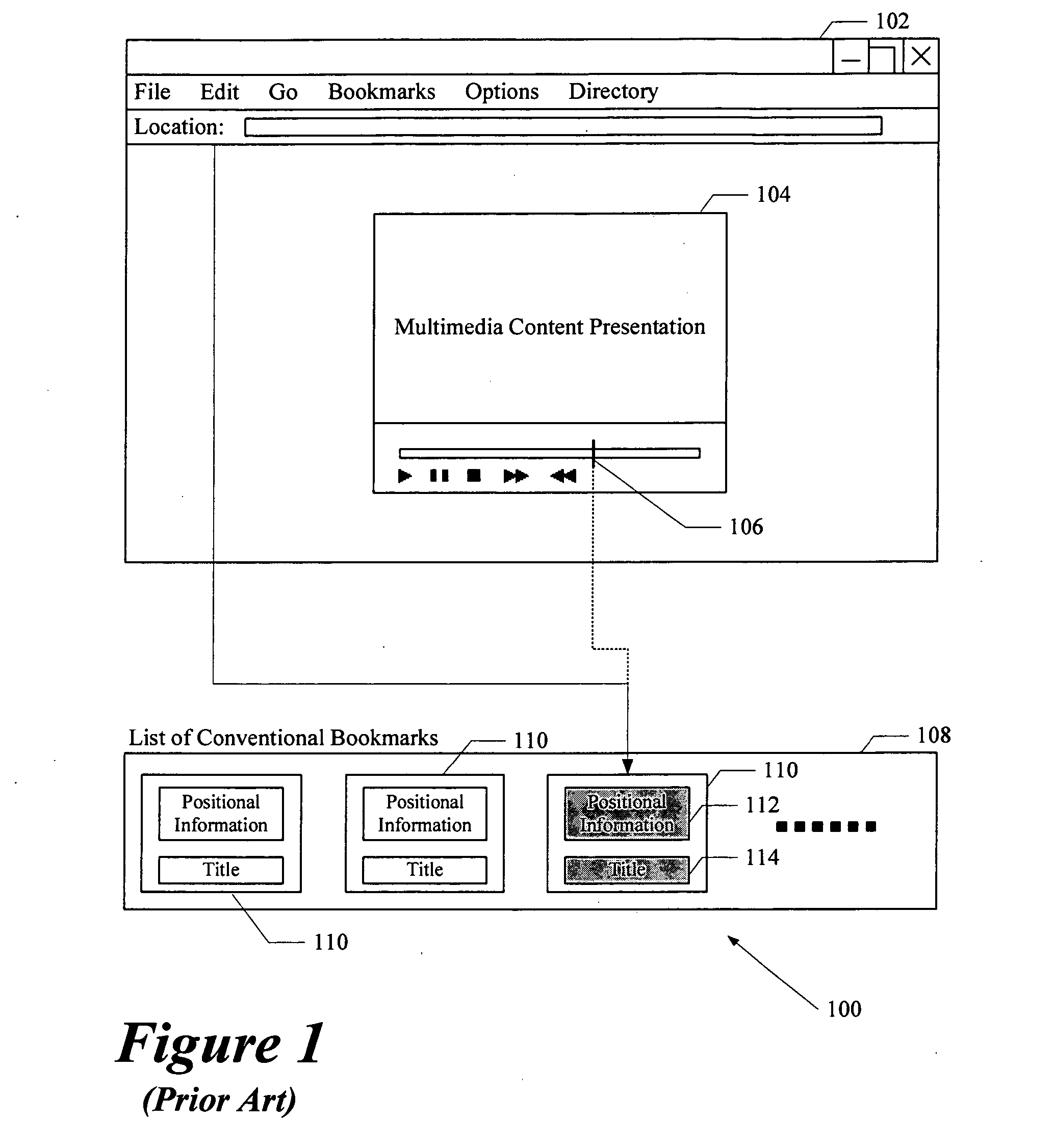System And Method For Transcoding A Multimedia File To Accommodate A Client Display
a multimedia file and client technology, applied in the field of marking multimedia files, can solve the problems of wasting time, user may be required to access content, and conventional bookmarks do not provide a convenient way of switching between different data formats
- Summary
- Abstract
- Description
- Claims
- Application Information
AI Technical Summary
Benefits of technology
Problems solved by technology
Method used
Image
Examples
third embodiment
[0294] the method of the present invention may also be gleaned from FIG. 56. In this embodiment, a request to mark the current location or termination position 5630 of the video is sent to the network server by the client. When playback of the interrupted video or multimedia content 5602 is later requested, the server preferably executes a scene change detection algorithm on the rewind interval 5616, i.e., the segment of multimedia content 5602 between viewing beginning position 5614 and termination position 5630. Upon completion of the scene detection algorithm, the network server sends the client system the resulting list of scene boundaries or scene change frames 5618, 5620, 5622, 5624 and 5628, which will serve as refresh frames. Playback of the video or multimedia content 5602 preferably begins upon completion of the client's display of refresh frames 5618, 5620, 5622 and 5624.
[0295] Illustrated in FIG. 57 is a flow chart depicting a static method of adaptive refresh rewinding ...
first embodiment
[0318] MetaSync First Embodiment
[0319]FIG. 68 shows the system to implement the present invention for a set top box (“STB”) with the personal video recorder (“PVR”) functionality. In this embodiment 6800 of the present invention, the metadata agent 6806 receives metadata for the video content of interest from a remote metadata server 6802 via the network 6804. For example, a user could provide the STB with a command to record a TV program beginning at 10:30 PM and ending at 11:00 PM. The TV signal 6816 is received by the tuner 6814 of the STB 6820. The incoming TV signal 6816 is processed by the tuner 6814 and then digitized by MPEG encoder 6812 for storage of the video stream in the storage device 6810. Metadata received by the metadata agent 6806 can be stored in a metadata database 6808, or in the same data storage device 6810 that contains the video streams. The user could also indicate a desire to interactively browse the recorded video. Assume further that due to emergency new...
second embodiment
[0322] MetaSync Second Embodiment
[0323]FIG. 69 shows the system 6900 that implements the present invention when a STB 6930 with PVR is connected to the analog video cassette recorder (VCR) 6920. In this case, everything is the same as the previous embodiment, except for the source of the video stream. Specifically, metadata server 6902 interacts with the metadata agent 6906 via network 6904. The metadata received by the metadata agent 6906 (and optionally any instructions stored by the user) are stored in metadata database 6908 or video stream storage device 6910. The analog VCR 6920 provides an analog video signal 6916 to the MPEG encoder 6912 of the STB 6930. As before, the digitized video stream is stored by the MPEG encoder 6912 in the video stream storage device 6910.
[0324] From the business point of view, this embodiment might be an excellent model to reuse the content stored in the conventional videotapes for the enhanced interactive video service. This model is beneficial t...
PUM
| Property | Measurement | Unit |
|---|---|---|
| time | aaaaa | aaaaa |
| relative time | aaaaa | aaaaa |
| Time | aaaaa | aaaaa |
Abstract
Description
Claims
Application Information
 Login to View More
Login to View More - R&D
- Intellectual Property
- Life Sciences
- Materials
- Tech Scout
- Unparalleled Data Quality
- Higher Quality Content
- 60% Fewer Hallucinations
Browse by: Latest US Patents, China's latest patents, Technical Efficacy Thesaurus, Application Domain, Technology Topic, Popular Technical Reports.
© 2025 PatSnap. All rights reserved.Legal|Privacy policy|Modern Slavery Act Transparency Statement|Sitemap|About US| Contact US: help@patsnap.com



